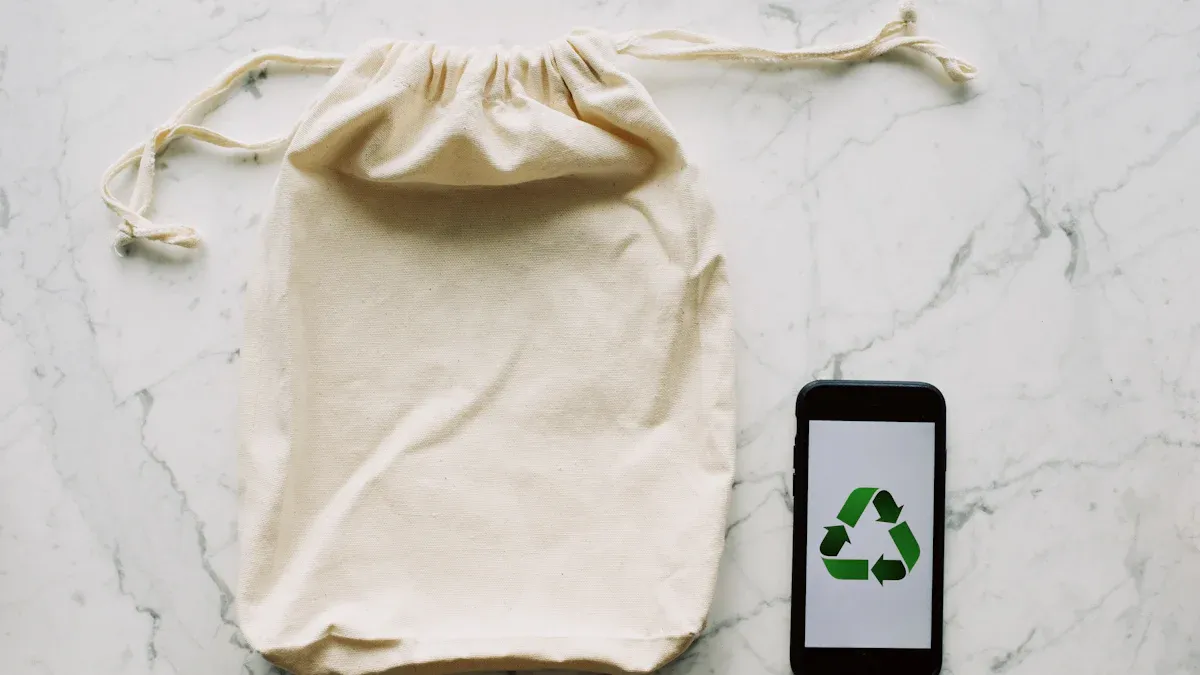
By 2025, machine learning algorithms will be a key solution to microplastic pollution. The constant washing of textiles releases microplastics. This washing of textiles has a terrible impact on the environment. The release of microfibers from textiles during washing must stop. A new approach promises the reduction of microfiber release and microplastic fibers. This environmentally friendly approach focuses on learning for the reduction of microfiber emissions. The impact of this learning is a reduction in microplastics.
This three-pronged approach guides the textile industry's learning:
- Predictive Design Learning: An algorithm for better textiles.
- Manufacturing Optimization: For the reduction of microfibers.
- Consumer Feedback Loop: Learning from the washing of textiles.
This sustainable strategy shows the impact of machine learning applications. The goal is the reduction of microplastics from all textiles. This sustainable approach helps the environment. The release of microplastics from the washing of textiles is a problem. The release of microfibers from textiles during washing is a problem. The release of microfibers from textiles during washing is a problem. The release of microfibers from textiles during washing is a problem. The release of microfibers from textiles during washing is a problem. The sustainability of textiles is important for the environment. This microfiber shedding impacts sustainability.
Predictive Design: The First Line of Defense
The best solution to microfiber shedding is stopping it at the source. Predictive design offers this powerful first step. This approach uses machine learning to forecast how a textile will behave before a single thread is woven. It allows designers to create fabrics with built-in durability. This process leads to a major reduction in the release of microfibers. The impact on the environment is profoundly positive. This sustainable method helps prevent the creation of microplastics. The goal is a future with fewer microplastics in our water.
Applying Machine Learning Algorithms
Textile scientists use specific machine learning algorithms to build better textiles. These models analyze huge datasets to find patterns. This learning process connects fabric characteristics to the potential release of microfibers. The result is a clear path toward the reduction of microplastic fibers. This environmentally friendly approach is changing the textile industry.
Key Data for Predictive Models To make accurate predictions, the algorithm needs the right information. This data helps the model understand how textiles create microplastics.
- Textile Properties: The model learns from fabric type, yarn geometry, and whether the textile is knitted or woven.
- Washing Conditions: The learning includes data on washing machine type, water temperature, and detergent.
- Fabric Treatments: The model considers chemical finishes that can affect a textile's stability during washing.
This detailed learning helps the algorithm predict the release of microfibers from textiles during washing. Companies like Levi Strauss already use a similar approach. They employ AI to create designs that reduce fabric waste. This same logic now applies to the reduction of microplastics. A deep learning approach can even predict the 3D architecture of textiles. This helps engineers design stronger fabrics from the start. The impact of this technology is a massive reduction in microfiber emissions and a better environment.
Simulating Fabric Wear
Predicting a fabric's future is a key part of this sustainable strategy. Scientists use advanced machine learning algorithms for this task. Generative Adversarial Networks (GANs) can simulate years of washing and wear in just minutes. This simulation shows how a textile will age. It identifies weak points that lead to the release of microfibers. This helps designers prevent the formation of microplastics.
GANs work by translating a new material into an aged one. The model takes an image of a new textile. It then applies simulated stress to show how it will degrade over time. This process helps identify issues that cause microfiber release.
- The simulation can show weak seam strength.
- It can pinpoint areas that will fray from movement.
- It identifies fabric defects like color spots or contamination that worsen with washing.
This digital aging process reveals vulnerabilities. Designers see where a textile is likely to break down and release microplastics. They can then adjust the fabric's construction. This proactive step ensures a significant reduction in microfiber emissions. The impact is cleaner water and a healthier environment. This reduction of microplastics from washing is vital for global sustainability. The constant washing of textiles will no longer have to harm the environment. The reduction of microfibers from all textiles is the ultimate goal. This focus on sustainability will stop the flow of microplastics.
Manufacturing for Microplastic Reduction

Predictive design is only half the battle. The manufacturing process itself can damage textiles, creating weak points that lead to the release of microfibers. By 2025, machine learning will revolutionize the factory floor. This technology provides a powerful solution for minimizing fiber release during production. This sustainable approach focuses on creating stronger, more resilient textiles from the very beginning. The impact on the environment is a significant reduction in future microplastics.
Real-Time Process Control
Factories are becoming smarter. They use an advanced approach with sensors and cameras to monitor textile production in real time. This system is the core of a new learning process for preventing the release of microfibers. It allows machines to correct errors instantly. This prevents damage that causes the shedding of microfibers during consumer washing. The result is a major reduction in microplastics.
High-tech sensors collect constant data from knitting and weaving machines. This information feeds a central algorithm, giving it a complete picture of the production line. This learning helps the system understand the textile's health.
- Fabric-based touch sensors can be embroidered directly into textiles to monitor friction.
- Piezo-resistive matrices create pressure-sensing textiles for activity recognition.
- Basic sensors track crucial data points like machine speeds and machine steps.
At the same time, computer vision systems act as tireless inspectors. These cameras scan the textile for tiny flaws that the human eye might miss. They can identify issues that weaken the fabric and lead to the release of microfibers. This process helps stop microplastics before they can form.
Defects Identified by Computer Vision Machine learning algorithms can spot numerous fabric defects. Common examples include:
- Stains or holes
- Broken threads (ends or wefts)
- Changes in yarn angle, which indicate stress
- Knots or floats in the weave
The machine learning algorithm analyzes all this data. It then makes immediate, automatic adjustments to the machinery. This intelligent control fine-tunes yarn feeding, adjusts tension, and ensures perfect pattern execution. This active management strengthens the final textile. The reduction in weak points means fewer microfibers will break free during future washing. This has a positive impact on the environment and promotes sustainability. This reduction of microfibers is key to stopping microplastic pollution.
Smart Finishing Techniques
The final stage of manufacturing offers one last chance to fortify a textile. Smart finishing techniques use machine learning to apply protective coatings with incredible precision. This environmentally friendly approach adds a shield to the fabric. The shield locks fibers in place, providing another layer of defense against microfiber release during washing. This contributes to the overall reduction of microplastics.
This process moves beyond one-size-fits-all applications. Instead, machine learning algorithms analyze the unique surface of each textile. They examine the texture at a microscopic level to determine the best coating strategy. This learning ensures the optimal amount of an eco-friendly coating, like pectin or other biopolymers, is used. This precision improves the textile's durability and supports sustainability. The impact is a textile less prone to shedding microfibers.
Different machine learning models work together to achieve this.
- Artificial Neural Networks (ANNs) can predict the final coating thickness and hardness with high accuracy.
- Support Vector Machines (SVMs) are also used to predict coating properties, achieving a correlation of over 0.99 with experimental results.
- Genetic Algorithms (GAs) help find the perfect combination of application settings for the best possible finish.
This data-driven method optimizes the textile surface to resist wear and reduce friction. A stronger surface means the textile can withstand the stress of washing without shedding microfibers. This smart approach to finishing is a critical step in the reduction of microplastic fibers. It ensures that the textiles we use do not harm the environment. The ultimate goal is the reduction of microplastics from every textile, protecting our planet's water from microplastic pollution. This focus on sustainability is changing the industry.
Smart Machine Learning Applications

The lifecycle of a textile does not end at the factory. Smart machine learning applications create a feedback loop. This loop connects consumer use back to design and manufacturing. This sustainable approach ensures continuous improvement in the fight against microplastic pollution. The impact of this learning is a rapid reduction in microplastics from every textile.
Machine Vision for Microplastic Detection
Measuring the problem is the first step toward solving it. Machine vision gives scientists a powerful tool to detect microplastics. New systems use cameras and AI to find and count microplastics in water. This technology helps researchers test the effectiveness of new textiles after washing. It provides clear data on the release of microfibers. This learning helps confirm the reduction of microplastics.
A key challenge is the complexity of image data. Machine learning algorithms must improve to better classify different types of microplastics. This will enhance the accuracy of detection and help the environment.
This technology replaces slow, manual methods. It allows for real-time tracking of microplastics. This data shows the direct impact of low-shed textiles on the environment. The reduction of microfibers from washing is no longer a guess. It becomes a measurable fact. This helps the entire textile industry move toward better sustainability. The goal is a world with fewer microplastics in our water. This approach helps protect the environment from the release of microfibers during washing.
Data-Driven Product Iteration
Data from consumer use completes the learning cycle. By 2025, smart textiles will collect information on how they perform during washing. This data-driven approach allows for rapid product improvements. It shortens the development time for the next generation of textiles. This has a huge impact on the reduction of microfibers.
This process relies on an ethical framework. Companies must be transparent about data collection. They must get clear consent from users. This builds trust and supports long-term sustainability.
- Natural Language Processing (NLP) analyzes customer reviews about a textile.
- Clustering algorithms group textiles based on wear patterns from washing.
- Sensors in a textile can track stress and strain during washing.
This information feeds back to designers. They see exactly how a textile breaks down. This learning helps them prevent the release of microfibers and microplastics. This environmentally friendly approach ensures each new textile is better than the last. The constant release of microfibers from washing can be stopped. This sustainable method leads to a significant reduction of microplastics. The reduction of microfibers from all textiles protects the environment. This reduction is vital for the environment.
By 2025, machine learning will be a practical tool for the textile industry, not just a theory. This learning drives the reduction of microplastics from every textile. This sustainable approach has a major impact on the environment. The reduction of the release of microfibers from the washing of textiles is the primary goal. This learning process works in three key stages for the reduction of microfibers:
- Predictive Design
- Optimized Manufacturing
- Consumer Feedback from washing
This approach ensures the reduction of microplastics. The impact of this learning is a reduction in the release of microfibers from every textile. The washing of textiles will be safer for the environment. This reduction of microfibers from textiles is key to sustainability. The release of microfibers from washing textiles must stop. This reduction of microplastics from washing textiles is the goal. To make this vision a reality and stop microplastic pollution, collaboration is essential.
FAQ
How does this technology stop the release of microplastics?
This sustainable approach prevents the release of microplastics from textiles. It uses learning to design a better textile. The textile manufacturing process for all textiles is improved. This stops the release of microfibers. The washing of textiles becomes safer for the environment. This reduction of microplastics protects the environment.
What is the main goal for all textiles?
The goal is the reduction of microfibers from every textile. The constant washing of textiles releases microfibers. This release of microfibers creates microplastics. The new textile design stops this release. This protects the environment from the impact of microplastics. The washing of textiles will create fewer microplastics.
Why is the washing of textiles a problem for the environment?
The washing of textiles causes the release of microfibers. These microfibers are tiny pieces of plastic. The microfibers become microplastics in water. This release of microfibers from the washing of textiles harms the environment. The reduction of this release of microfibers from every textile is important.
This problem affects all types of textiles. The release of microfibers from the washing of every textile contributes to the global issue of microplastics. This sustainable approach offers a solution for all textiles. The impact is a reduction of microplastics.
What are the key steps in this approach?
This approach has three main parts for every textile. Each part helps stop the release of microfibers. The washing of textiles becomes less harmful. This helps stop the release of microplastics.
- Predictive Design: Creates a stronger textile to stop the release of microfibers.
- Smart Manufacturing: Makes the textile correctly to prevent the release of microfibers.
- Feedback Loop: Uses data from the washing of textiles to improve the next textile.
See Also
Revolutionizing Textile Manufacturing: AI's Predictive Maintenance Impact by 2025
Forecasting Success: Predictive Models Shaping Fashion Retail's Future by 2025
Transforming Logistics: AI Sensors' Profound Impact on Fashion Supply Chains 2025
Unlocking Growth: Machine Learning's Role in Predicting Trends and Boosting Sales
Sustainable Style: Leveraging AI Solutions for a Greener Fashion Industry